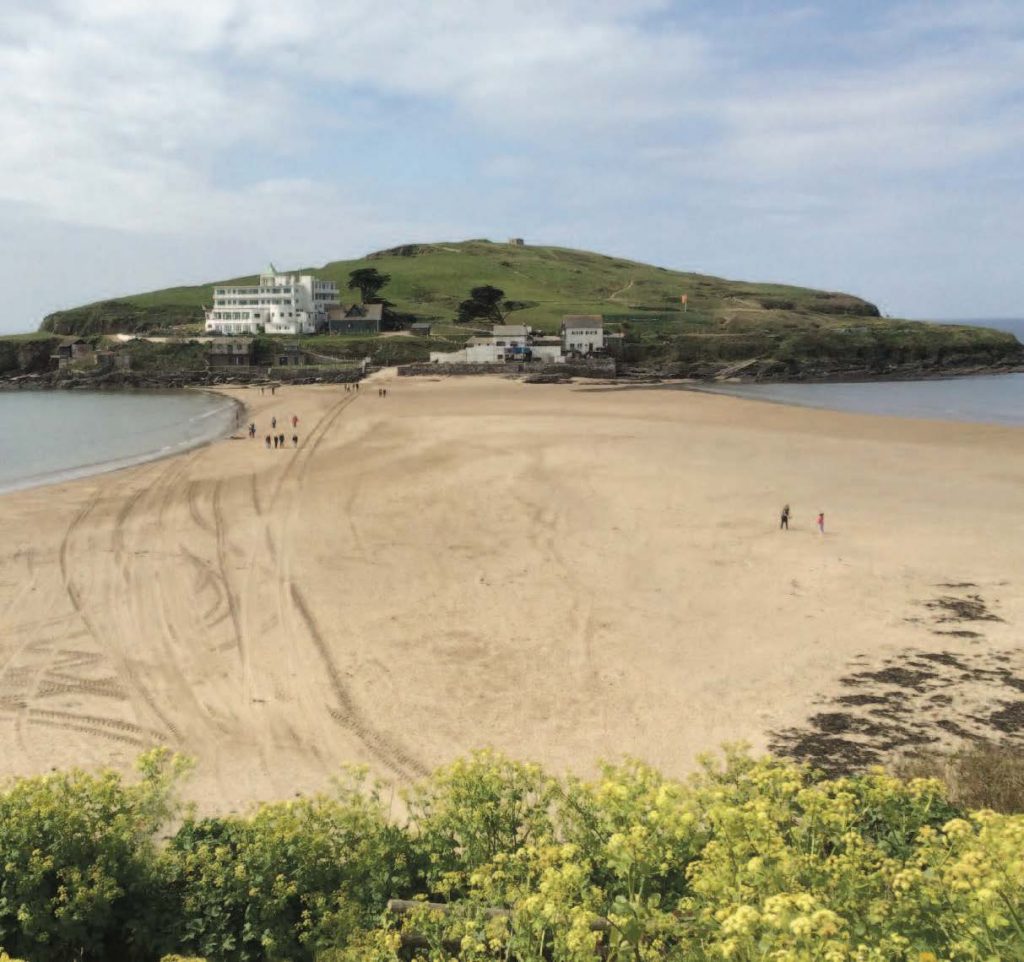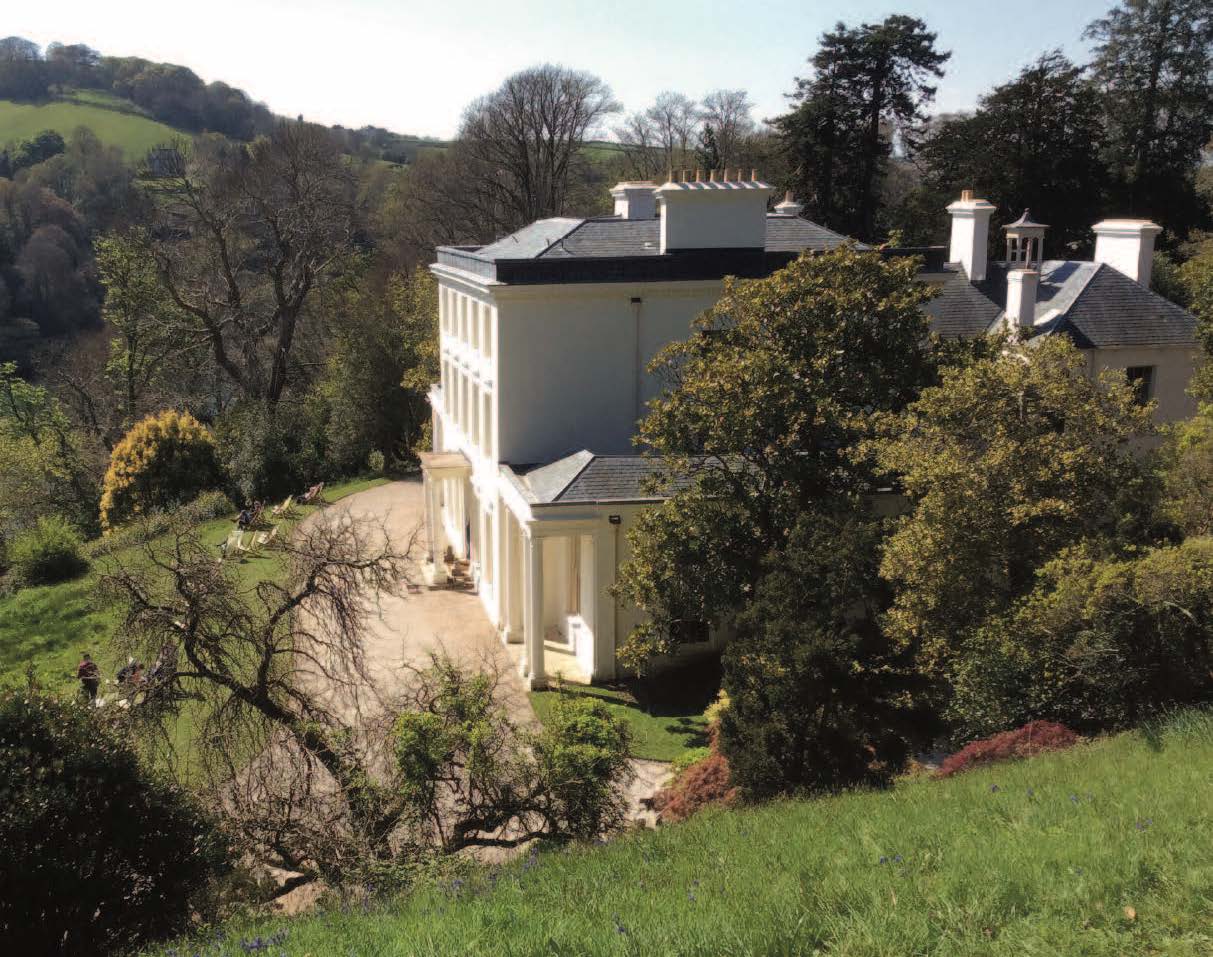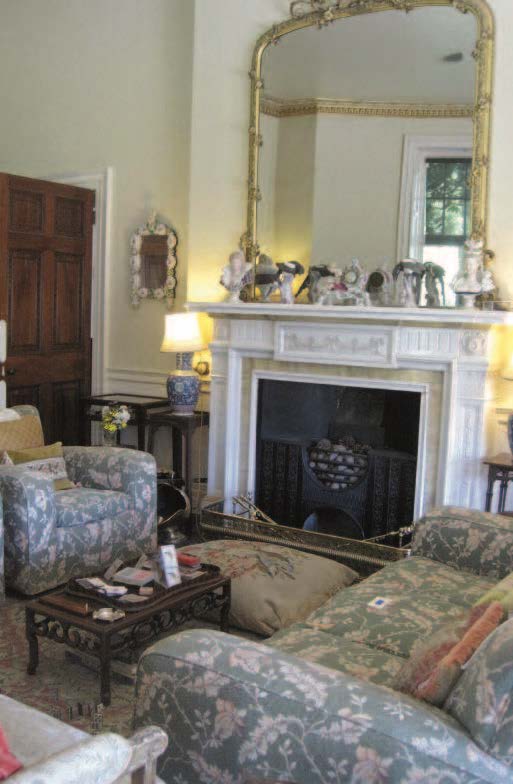A visit with Agatha Christie
Story and photos by Ann-Maureen Owens | May 2019

“The loveliest place in the world — it quite takes my breath away!” was how England’s late, great mystery writer described her beloved holiday home, Greenway, in Devon. Visiting on a sunny April day with the gardens in full bloom, I had to agree with her. Greenway can charm even those of us who have only a casual interest in the Queen of Crime.
Agatha Christie and her second husband, Max Mallowan, would arrive in spring and stay on to cerebrate Agatha’s September 15th birthday, an occasion still commemorated at Greenway. The house was occupied by her family until Agatha’s only grandchild, Mathew, gifted it to the National Trust in 2005. Mathew worked closely with the Trust to restore the house to its 1950s heyday, when it served as both the centre of family life and the setting for a few Agatha Christie mysteries. Doors opened to the public ten years ago. There are many ways to arrange your visit. Those who drive must reserve parking in advance for a specific time slot. Since parking is prohibited in nearby lanes and very limited at Greenway, the Trust suggests visitors consider alternative ways to travel.
We chose the ferry from Dartmouth and were rewarded with heron sightings and a water view of the boathouse, the scene of the crime in Dead Man’s Folly. A winding uphill path from the quay, bordered by waves of bluebells, is not arduous, but the Trust provides a car to drive those with mobility issues.
Or you can travel by vintage steam train from Paignton or Kingswear (across the estuary from Dartmouth) to Greenway Halt and enjoy a half-hour woodland walk to the house. More serious hikers can follow the Dart Valley Trail, or a Greenway Walk extension of the South West Coast Path.
On arrival, I paused to take in the stunning setting of the 1790s Georgian-style house. Agatha grew up in Devon and recognized Greenway when she saw it advertised in Country Life magazine in 1938. She jumped at the chance to spend some of the proceeds from her writing on this beautiful estate and make it a place of retreat from the publishing world. Here she could be Mrs. Mallowan, playing “Clock Golf” on the putting green and entertaining family and close friends.
Once inside the commodious, yet slightly cluttered entrance hall, you feel welcomed into a family home — a family of collectors! They collected antiques, such as the brass studded chest, where dressing-up clothes were stored, and must have inspired The Mystery of the Bagdad Chest. Family portraits adorn the walls and fishing rods, tennis rackets, golf clubs, and croquet mallets lean against shelves displaying Agatha’s and her daughter, Rosalind’s, collection of Tunbridge-ware and straw-work boxes. Max, one of England’s most cerebrated archaeologists, collected archaeological finds, and Rosalind’s husband, Anthony, had a collection of hats. Everyone collected art, ceramics, and of course, books!

Most of the 5,000-strong book collection fills the Library. When Greenway was requisitioned by the U.S. Navy during the Second World War, one of the officers painted a frieze along the upper section of the Library’s walls, detailing his Coastguard Flotilla’s journey from Florida’s Key West to Greenway. Agatha turned down the Navy’s offer to paint over it, as she felt it was part of the house’s history. Today it is the most striking feature of an inviting and comfortable room.
The Morning Room is given over to more family collections (pocket watches, calling-card cases, figurines) and a large portrait of Agatha, aged four, with her doll. The doll, Rosie, sits on a chair beneath the painting. In the Drawing Room, you can play Agatha’s piano (she was an accomplished pianist) or imagine her as her grandson remembers, by the fireplace reading works-in-progress aloud.
Helpful volunteers answered our questions about many unique furnishings as we wandered on through the kitchen, dining room, hallways, and up the main stairway to the bedrooms and study. The so-called Fax Room displays a complete set of Agatha Christie first editions and a collection of rare Stevengraphs — pictures woven from silk in 19th century Coventry.
We took advantage of a garden tour given daily by knowledgeable volunteer gardeners. The family passion for collecting extended to plants, and post-war for four decades, a commercial nursery was managed here by Agatha’s son-in-law. Greenway is still famous for its 150 varieties of camellia, as well as magnolias, rhododendrons, and hydrangeas. Agatha designed and planted the dahlia border and used dahlia cultivar names as clues in her short story, The Four Suspects.
Two walled gardens produce fruits and vegetables. Greenhouses nurture the most delicate plants. I was pleased to learn that produce from the gardens is used in the café, and that a large raised terrace is given over to an allotment-style garden tended by children from the local primary school, where Agatha was once a governess.
We ambled paths to the tennis court, the Fernery with its fountain and dog cemetery, and through woodlands rich in birds. The uphill path to the Top Garden, gives the best view of the River Dart towards Kingswear and Dartmouth, as well as an iconic view of the house as you walk back down the hill.
Allow at least a couple of hours to tour the house and grounds, plus time for a delicious lunch or Devon cream tea in the Barn Café. Be sure to browse Christie memorabilia in the upmarket National Trust shop.

Around South Devon
From the cathedral city of Exeter to picturesque villages, the wild moorland of Dartmoor National Park where wild ponies roam, and all along its south coast, Devon offers a wealth of places to go and things to see.
Torquay, where Agatha Christie was born and raised, is one of the seaside resort towns that, along with Paignton, Brixham, and several inviting beaches in-between, make up the Torbay Area, also known as The English Riviera for its warm weather and outstanding scenery.
The ancient port of Dartmouth boasts two castles perched on rocky coves and narrow, cobbled streets, featuring the 16th century Butterwalk, an attractive colonnaded arcade. The town cerebrates its annual regatta at the end of August.
Further west, Burgh Island, the setting for Agatha’s And Then There Were None and her Hercule Poirot classic, Evil Under the Sun is accessible from Bigbury-on-Sea on foot at low tide and by a quirky sea tractor when cut-off from the mainland. It’s worth the trip for a pint at the 14th century Pilchard Inn.
If You Go
When to go:
Greenway is open daily mid-February to October, 10:30 a.m. to 5:00 p.m.; November & December weekends only, 11 a.m. — 4 p.m.; special Christmas holiday openings.
Catch the first Greenway Literary Festival May 25 to June 9, 2019.
The International Agatha Christie Festival is scheduled around Agatha’s birthday, September 12-15, 2019 in Torquay and area.
Getting to Devon:
Great Western Railway’s trains leave London Paddington for various Devon stations. We took the train to Exeter, then rented a car to drive around Devon.
Getting to Greenway:
- By ferry from Dartmouth: www.greenwayferry.co.uk
- By steam train from Paignton or Kingswear: www.dartmouthrailriver.co.uk
- By car: Directions and parking reservation: www.nter.org.uk
- On foot: www.southwestcoastpath.org.uk or www.nationaltrust.org.uk/greenway
Accommodation:
There are many hotels and B&Bs in the area. We enjoyed a harbour-view room, pub dinner, and English breakfast at Dartmouth’s Royal Castle Hotel. www.royalcastle.co.uk
For a longer visit at Agatha Christie’s house, book early for a Greenway cottage or apartment. Guests have after-hours access to the gardens and extensive estate. www.nationaltrust.org.uk/greenway






